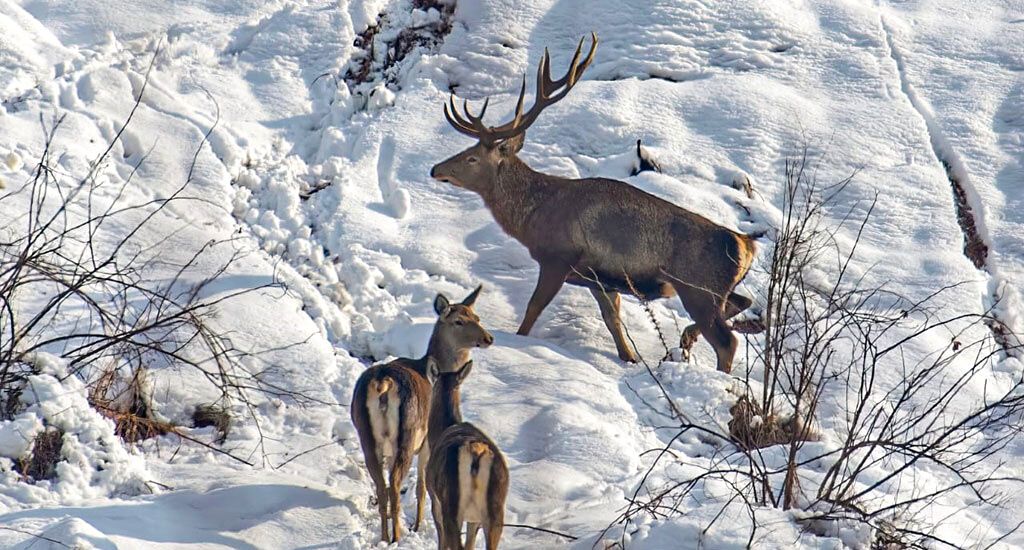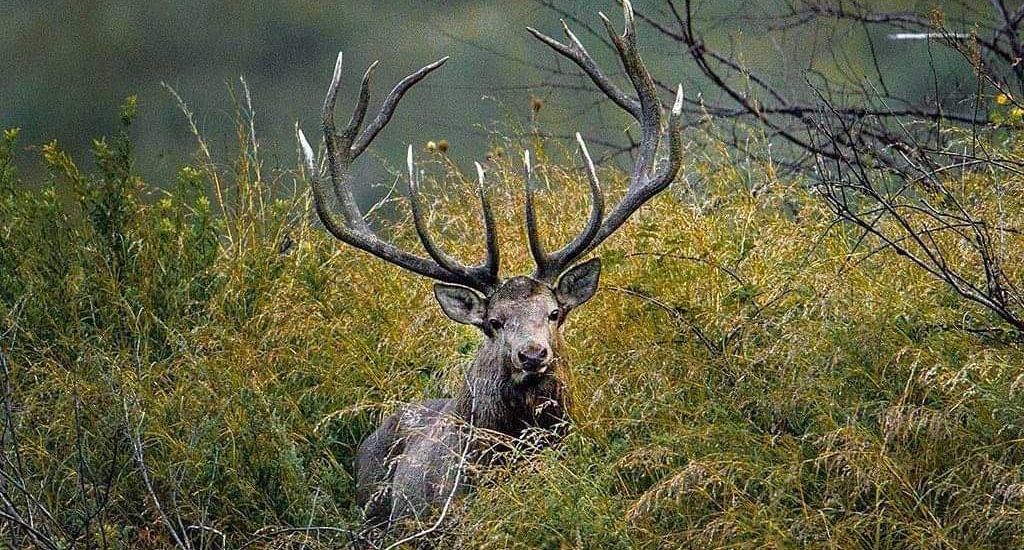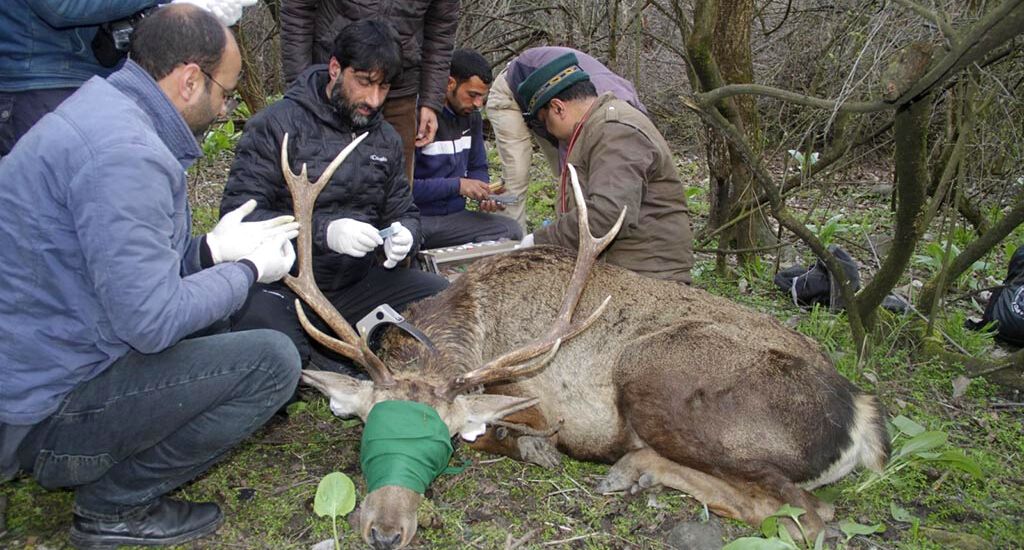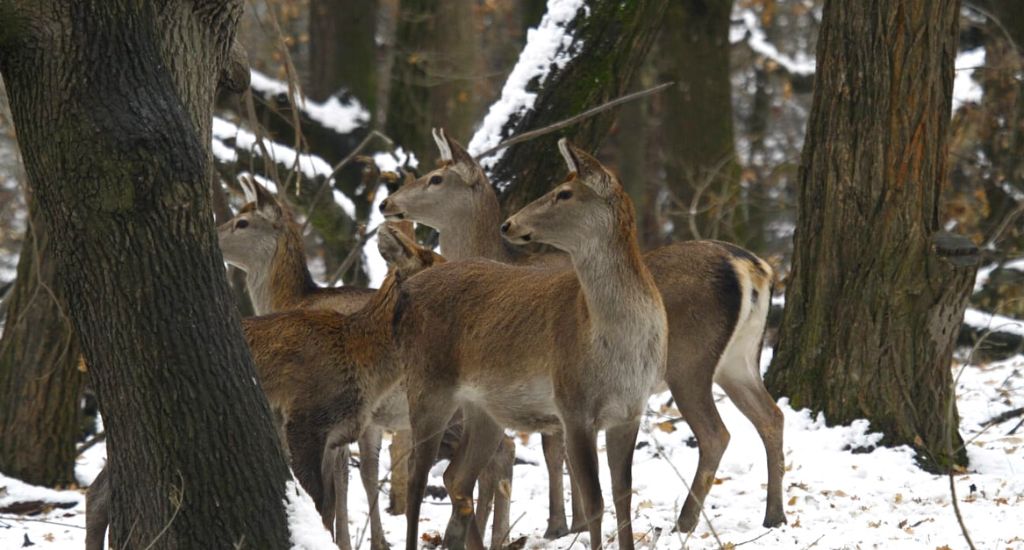
Will this stag party again?
Hangul, Jammu and Kashmir’s state animal, is critically endangered. While conservation efforts are leading to a small increase in its numbers, the struggle is far from over.

Hangul, Jammu and Kashmir’s state animal, is critically endangered. While conservation efforts are leading to a small increase in its numbers, the struggle is far from over.
The set of long, pointed and branched antlers adorning a wall in her house evokes bittersweet emotions in Khushboo, a teen living in the small village of Harwan in Srinagar of Kashmir.
They are the antlers of a hangul, the Kashmir stag that’s endangered now.
The antlers have been in her family for generations, though no one remembers how it came to be. What her grandfather, Ghulam Hassan Wani, does remember vividly is seeing the hanguls at close quarters in their village when he was young.
Khushboo hopes to see a real hangul some day.
Her wish may just come true some day. She might get to see the hangul in its natural habitat, going by the success – though marginal – of the government’s conservation efforts.
The Kashmir stag (Cervus hanglu hanglu) is the state animal of the Union Territory of Jammu and Kashmir.

The former state of Jammu and Kashmir was bifurcated into two union territories — Jammu and Kashmir, and Ladakh, with effect from 31 October 2019. The state bird of J&K is the khalij pheasant.
Also Read | ‘Only about 100 great Indian bustards remain now’
The shy animal belongs to a subspecies of the Central Asian red deer, and is endemic to Kashmir. It has a brown coat with speckled hair, with each antler having five tines. Actually, ‘hangul’ in Kashmiri means branched antlers.
The hangul was once widely distributed in the mountains of Kashmir. That’s how people like Khushboo’s grandfather could see them often.
“In my childhood, I used to see scores of Hangul foraging in the vicinity,” Wani recalled. “They even used to come close to our houses. But everything started changing three decades ago. The green landscape turned into a concrete jungle. Construction of buildings and bridges and increased human population have almost decimated their natural feeding grounds.”
Back then, a small population even thrived outside J&K — in the Chamba district of Himachal Pradesh.
But now the hangul’s distribution range has drastically declined, confining the animal to the 141 sq km spread of the Dachigam National Park.
Also Read | Death on the tail of migratory birds in Kashmir
Its limited distribution and small population make the hangul vulnerable. The IUCN Red Data Book, which records the list of species facing the risk of extinction, has declared the hangul as a critically endangered animal.
“Hangul is a long ranging animal. Its traditional habitat stretched from Kishtwar to Gurez. Unfortunately this corridor connectivity has been lost due to many factors,” said Khursheed Ahmad, scientist and head of Wild Life Sciences Division at the Sher-e-Kashmir University of Agricultural Sciences and Technology (SKUAST).
The hanguls numbered around 5,000 a century ago. But that was also when it was hunted widely by the local people, primarily for meat. Despite cessation of hunting, the animal population has been declining over the decades, reaching as low as 127 in 2008.

A census carried out by the Wildlife Protection Department, Jammu & Kashmir Government, in 2021 put the number of the hanguls at 263, a small rise in its population from 237 in 2019.
The population of the once-abundant Kashmir stag began dwindling due to several factors, many of them inter-connected. Fragmented habitat, inbreeding, poaching and poor female-fawn ratio are the main reasons for the decline in the numbers.
Also Read | ‘Wildlife conservation isn’t anti-development’
“Loss of corridor connectivity led to inbreeding,” said Ahmad.
“Disconnectivity between the main set of population in Dachigam and the adjoining protected areas like Wangat and Shikargarh leads to an ebb in the genetic spread,” he added.
This causes problems in having a healthy gene pool and ensuring a thriving population.
The female-fawn ratio has been hit hard. In 2006, there were nine fawns per 100 females due to high mortality.
“Harsh winters, natural predation by leopards and foxes and the coinciding movement of livestock with the fawning season are the major factors affecting the survival of fawns,” explained Ahmad.
Efforts to save the animal were launched in full force when the first scientific census carried out in 2004 showed a drastic decline in hangul population.

A sheep breeding farm within the national park was shifted out.
“Dachigam National Park is the only hope for the critically endangered hangul,” says MK Ranjitsinh in his book ‘A life with wildlife’. “Shifting the sheep breeding farm from the national park has been a big step in conserving whatever population has been left.”
Shifting the sheep farm also ensured more natural fodder for the hangul, said a senior official from the wildlife department.
The department provides additional fodder to the stags during winter when there is a scarcity.
“Feeding the animals salix leaves and salt licks in winter when there’s fodder scarcity has also helped in maintaining the numbers in the last few decades,” the official added.
A 5-acre breeding centre was also set up in Shikargarh Tral to boost in-situ breeding.
Also Read | Vanishing vultures find friends for their survival
But there is still a long way to go, according to Ahmad.
“Establishing corridor connectivity between Dachigam and the adjoining relic protected areas, breeding and re-introduction programme and elaborate research are needed to increase the hangul population,” he said.
Regional Wildlife Warden Kashmir, Rashid Yahya Naqash, feels that the public also has to play a part in the conservation effort.
“We seek the cooperation of the local people. If they stop grazing their animals in the hanguls’ habitat and refrain from disturbing the animals by trespassing, it will immensely help the conservation efforts,” he said.
It’s a race against time, for sure. With sustained conservation efforts, the wilderness in the Valley may echo with the sounds of the galloping hanguls. And Khushboo would get to see them roaming the mountains again.
Also Read | Once a pride, the Malkangiri pony struggles to survive
The lead image shows hanguls on a snow-clad mountain in Kashmir (Photo courtesy SKUAST-K) IMAGE H2
Nasir Yousufi is a journalist based at Srinagar.